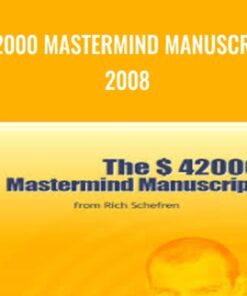The Complete Linux LPIC-1 Certification Course Exams 101-102 – Joe Parys
Question and Answer
What is To?
To is Welcome The Complete Linux LPIC-1 Certification Course Exams 101-102 Watch the promo video to see How You Can Pass The Linux LPIC-1 Certification Examinations!.
How does To Welcome?
Welcome To The Complete Linux LPIC-1 Certification Course Exams 101-102 Watch the promo video to see How You Can Pass The Linux LPIC-1 Certification Examinations!
What is 102) This Course?
102) This Course is (101 & is MASSIVE!.
How does 102) This Course is?
(101 & 102) This Course is MASSIVE!
What is You?
You is receive over 18+ hours of video content & 60+ lectures!.
How does You receive?
You receive over 18+ hours of video content & 60+ lectures!
What is Over 275,000+ Students?
Over 275,000+ Students is Join Who Have Enrolled In My Udemy Courses This Year!.
How does Over 275,000+ Students Join?
Join Over 275,000+ Students Who Have Enrolled In My Udemy Courses This Year!
What is 7,500+ Five Star Reviews?
7,500+ Five Star Reviews is on our courses prove Students Who Enrolling Are Getting Real Results!.
How does 7,500+ Five Star Reviews prove?
7,500+ Five Star Reviews on our courses prove Students Who Enrolling Are Getting Real Results!
What is this course?
this course is Then is for you!.
How does this course is?
Then this course is for you!
What is Click?
Click is "Take This Course Now" For Instant Life-Time Access!.
How does Click "Take?
Click "Take This Course Now" For Instant Life-Time Access!
What is you?
you is Why should learn Linux?.
How does you should?
Why should you learn Linux?
What is Linux?
Linux is is a fast-growing operating system, it is inexpensive and highly flexible..
How does Linux is?
Linux is a fast-growing operating system, it is inexpensive and highly flexible.
What is all?
all is Almost the key organizations in IT industry including Google use variations of Linux to power their servers..
How does all industry including?
Almost all the key organizations in IT industry including Google use variations of Linux to power their servers.
What is Linux?
Linux is is also a major player in the small and mid-sized server field, and it’s an increasingly viable platform for workstation and desktop use as well..
How does Linux is also?
Linux is also a major player in the small and mid-sized server field, and it’s an increasingly viable platform for workstation and desktop use as well.
What is Linux,?
Linux, is By understanding you’ll increase your standing in the job market..
How does Linux, understanding?
By understanding Linux, you’ll increase your standing in the job market.
What is you?
you is Even if already know Windows or Mac OS and your employer uses these systems exclusively, understanding Linux will give you an edge when you’re looking for a new job or you’re looking for a promotion..
How does you already know?
Even if you already know Windows or Mac OS and your employer uses these systems exclusively, understanding Linux will give you an edge when you’re looking for a new job or you’re looking for a promotion.
What is The Linux Professional Institute (LPI)?
The Linux Professional Institute (LPI) is has developed its LPI-1 certification as an introductory certification for people who want to enter careers involving Linux..
How does The Linux Professional Institute (LPI) has developed?
The Linux Professional Institute (LPI) has developed its LPI-1 certification as an introductory certification for people who want to enter careers involving Linux.
What is The exam?
The exam is is.
How does The exam is?
The exam is
What is an individual?
an individual is meant to certify that has the skills necessary to install, operate, and troubleshoot a Linux system and is familiar with Linux-specific concepts and basic hardware..
How does an individual meant?
meant to certify that an individual has the skills necessary to install, operate, and troubleshoot a Linux system and is familiar with Linux-specific concepts and basic hardware.
What is The purpose of this course?
The purpose of this course is is to help you pass the LPIC-1 exams (101 and 102)..
How does The purpose of this course is?
The purpose of this course is to help you pass the LPIC-1 exams (101 and 102).
What is applications,?
applications, is networking, and security, those are the topics that are emphasized in this.
How does applications, networking,?
applications, networking, and security, those are the topics that are emphasized in this
What is You’ll?
You’ll is learn enough to get a Linux system up and running and to configure it for.
How does You’ll learn?
You’ll learn enough to get a Linux system up and running and to configure it for
What is four major benefits:?
four major benefits: is There are Relevance The LPIC exams were designed with the needs of Linux professionals in mind..
How does four major benefits: are?
There are four major benefits: Relevance The LPIC exams were designed with the needs of Linux professionals in mind.
What is Quality?
Quality is The exams have been extensively tested and validated using psychometric standards..
How does Quality have been extensively tested?
Quality The exams have been extensively tested and validated using psychometric standards.
What is Neutrality LPI?
Neutrality LPI is Neutrality LPI is an organization that doesn’t itself market any Linux distribution..
How does Neutrality LPI is?
Neutrality LPI is an organization that doesn’t itself market any Linux distribution.
What is The exams?
The exams is Support are supported by major players in the Linux world..
How does The exams Support?
Support The exams are supported by major players in the Linux world.
What is this opportunity?
this opportunity is Don't miss to learn Linux through this easy to follow course and add versatility in your skills, necessary for today's highly competitive market..
How does this opportunity Don't miss?
Don't miss this opportunity to learn Linux through this easy to follow course and add versatility in your skills, necessary for today's highly competitive market.
What is this Course"?
this Course" is Click on "Take now, and I will see you inside..
How does this Course" Click?
Click on "Take this Course" now, and I will see you inside.
What is the right mindset,?
the right mindset, is With understanding, and application of the teachings in this course, you will instantly begin to move towards receiving your Linux LPIC-1 certification..
How does the right mindset, understanding,?
With the right mindset, understanding, and application of the teachings in this course, you will instantly begin to move towards receiving your Linux LPIC-1 certification.
What is we?
we is When learn something new, I add it to the course - at no additional cost to you!.
How does we learn?
When we learn something new, I add it to the course - at no additional cost to you!
What is a course?
a course is This is that will continue to add more and more to every aspect of your life..
How does a course is?
This is a course that will continue to add more and more to every aspect of your life.
What is addition?
addition is In to the Udemy 30-day money back guarantee, you have my personal guarantee that you will love what you learn in this course..
How does addition have?
In addition to the Udemy 30-day money back guarantee, you have my personal guarantee that you will love what you learn in this course.
What is you?
you is If ever have any questions please feel free to message us directly and we will do our best to get back to you as soon as possible!.
How does you ever have?
If you ever have any questions please feel free to message us directly and we will do our best to get back to you as soon as possible!
What is I?
I is What can't do in this Course.. I can't guarantee your success – this course does take work on your part..
How does I can't do?
What I can't do in this Course.. I can't guarantee your success – this course does take work on your part.
What is You?
You is But Can Do It!.
How does You Can Do?
But You Can Do It!
What is I?
I is am also not responsible for your actions..
How does I am also not?
I am also not responsible for your actions.
What is You?
You is are responsible for 100% of the decisions and actions you make while using this course..
How does You are?
You are responsible for 100% of the decisions and actions you make while using this course.
What is This course?
This course is will not remain this price forever!.
How does This course will not remain?
This course will not remain this price forever!
What is It's?
It's is time to take action!.
How does It's take?
It's time to take action!
What is the "take?
the "take is Click this course" button at the top right now!.
How does the "take Click?
Click the "take this course" button at the top right now!
What is ...every hour?
...every hour is you delay is costing you money... See you in the course!.
How does ...every hour is costing?
...every hour you delay is costing you money... See you in the course!
What is Our Course!?
Our Course! is Learn How To Gain The Most In.
How does Our Course! Learn?
Learn How To Gain The Most In Our Course!
What is (2:57) Introduction (4:45) Section 2:?
(2:57) Introduction (4:45) Section 2: is GNU and UNIX commands CLI Introduction and File Management (20:19) CLI Introduction And File Management part-2 (8:51) Standard Input / Output / Error, Tail and Head (18:32) All about vi Editor (28:12) Stream Editing Text Files (13:49) Setting Environment Variables (19:49) Concatenating and Splitting Files (8:38) Processing / Filtering text using grep / tee / xargs (15:08) Processing / Filtering text using Paste / Join / Expand / Unexpand (14:36) Files and Folders Archiving: tar / dd / cpio (21:13) Compressing Files using gzip bzip2 and tar (12:55) Process Management through Nice and Renice (14:18) Putting jobs in Background and Foreground (19:16) Terminating Processes (16:21) Section 3: Shells, Scripting and Data Management User Profiles and System Profiles (17:39) Scripting Basics (17:15) Scripting Basics (Using Loops) part-2 (15:15) SQL Data Management (19:05) SQL Data Management part-2 (18:30) Section 4: User Interfaces and Desktops X11-Xorg Server And X-11 Forwarding X11 Server and X11 Forwarding part-2 (12:41) Linux Display Managers (19:31) Accessibility Options in Linux (10:41) Section 5: Devices, Linux Filesystems, Filesystem Hierarchy Standard Filesystem Types and Creating Different Filesystems (16:56) Filesystem Maintenance (17:14) Mounting And Unmounting Of Filesystems File System Hierarchy In Linux All about Files / Folders Ownership and associated Permissions (23:45) Special Permission Bits For Files And Folders (SUID, SGID & Sticky Bit) (15:11) SUID, SGID And Sticky Bit Part-2 (12:50) What are Soft and Hard Links (16:27) Finding Files in Linux (18:51) Creating Partitions using MBR and GPT (14:19) Creating Partitions using MBR and GPT part-2 (14:31) Managing Disk Quotas (12:16)t Section 6: System Architecture Determine Hardware And Manage Kernel Modules (14:17) Boot Sequence / Kernel Parameters / Single User Mode / Proper Shutdown (19:25) System Initialization through Init, Upstart and Systemd (20:45) Run Levels in Linux (20:32) Section 7: Linux Installation and Package Management Describe Common Storage Devices (12:26) Logical Volume Manager (15:53) Managing Shared Libraries (16:35) Managing Bootloaders GRUB GRUB2 (15:09) Linux Packages Management through APT (17:21) linux Packages Management through YUM (11:53) Manage RPM packages (rpm2cpio, cpio commands) (7:53) Section 8: Administrative Tasks Changing Name of your Linux Box Managing Users and Groups (19:29) Local Passwords Management (16:12) Scheduling Tasks In Linux (18:15) Scheduling tasks in Linux part-2 (16:57) Timezone Settings and Locale (16:42) Timezone Settings and Locale (part-2) (7:41) Section 9: Essential System Services Setting Date and Time On Linux (19:32) Linux Email Management and Mail Transfer Agents (19:38) System Logging in Linux (17:28) System Logging in Linux part-2 (19:30) System Logging in Linux part-3 (17:15) Section 10: Networking Fundamentals Quick Overview of TCP / UDP and common ports (16:36) IPv4 / IPv6 / Netmask / CIDR / Gateways (18:23) IPv4 / IPv6 / Netmask / CIDR / Gateways (part-2) (17:20) Network Configuration and tips for Debian based distribution (Ubuntu) (25:22) Network Configuration and tips for Red Hat based distributiosn (CentOS) (10:11) Client Side DNS Settings On Linux (20:45) Section 11: Security Restrictiions through User Limits (ulimit) Securing Connection through SSH (17:34) Encrypting Data Through GPG (17:24) Security Aspects in Linux (18:02) Security Aspects in Linux part-2 (18:58) Get The Complete Linux LPIC-1 Certification Course Exams 101-102 - Joe Parys, Only Price $47 Tag: The Complete Linux LPIC-1 Certification Course Exams 101-102 - Joe Parys Review..
How does (2:57) Introduction (4:45) Section 2: using?
(2:57) Introduction (4:45) Section 2: GNU and UNIX commands CLI Introduction and File Management (20:19) CLI Introduction And File Management part-2 (8:51) Standard Input / Output / Error, Tail and Head (18:32) All about vi Editor (28:12) Stream Editing Text Files (13:49) Setting Environment Variables (19:49) Concatenating and Splitting Files (8:38) Processing / Filtering text using grep / tee / xargs (15:08) Processing / Filtering text using Paste / Join / Expand / Unexpand (14:36) Files and Folders Archiving: tar / dd / cpio (21:13) Compressing Files using gzip bzip2 and tar (12:55) Process Management through Nice and Renice (14:18) Putting jobs in Background and Foreground (19:16) Terminating Processes (16:21) Section 3: Shells, Scripting and Data Management User Profiles and System Profiles (17:39) Scripting Basics (17:15) Scripting Basics (Using Loops) part-2 (15:15) SQL Data Management (19:05) SQL Data Management part-2 (18:30) Section 4: User Interfaces and Desktops X11-Xorg Server And X-11 Forwarding X11 Server and X11 Forwarding part-2 (12:41) Linux Display Managers (19:31) Accessibility Options in Linux (10:41) Section 5: Devices, Linux Filesystems, Filesystem Hierarchy Standard Filesystem Types and Creating Different Filesystems (16:56) Filesystem Maintenance (17:14) Mounting And Unmounting Of Filesystems File System Hierarchy In Linux All about Files / Folders Ownership and associated Permissions (23:45) Special Permission Bits For Files And Folders (SUID, SGID & Sticky Bit) (15:11) SUID, SGID And Sticky Bit Part-2 (12:50) What are Soft and Hard Links (16:27) Finding Files in Linux (18:51) Creating Partitions using MBR and GPT (14:19) Creating Partitions using MBR and GPT part-2 (14:31) Managing Disk Quotas (12:16)t Section 6: System Architecture Determine Hardware And Manage Kernel Modules (14:17) Boot Sequence / Kernel Parameters / Single User Mode / Proper Shutdown (19:25) System Initialization through Init, Upstart and Systemd (20:45) Run Levels in Linux (20:32) Section 7: Linux Installation and Package Management Describe Common Storage Devices (12:26) Logical Volume Manager (15:53) Managing Shared Libraries (16:35) Managing Bootloaders GRUB GRUB2 (15:09) Linux Packages Management through APT (17:21) linux Packages Management through YUM (11:53) Manage RPM packages (rpm2cpio, cpio commands) (7:53) Section 8: Administrative Tasks Changing Name of your Linux Box Managing Users and Groups (19:29) Local Passwords Management (16:12) Scheduling Tasks In Linux (18:15) Scheduling tasks in Linux part-2 (16:57) Timezone Settings and Locale (16:42) Timezone Settings and Locale (part-2) (7:41) Section 9: Essential System Services Setting Date and Time On Linux (19:32) Linux Email Management and Mail Transfer Agents (19:38) System Logging in Linux (17:28) System Logging in Linux part-2 (19:30) System Logging in Linux part-3 (17:15) Section 10: Networking Fundamentals Quick Overview of TCP / UDP and common ports (16:36) IPv4 / IPv6 / Netmask / CIDR / Gateways (18:23) IPv4 / IPv6 / Netmask / CIDR / Gateways (part-2) (17:20) Network Configuration and tips for Debian based distribution (Ubuntu) (25:22) Network Configuration and tips for Red Hat based distributiosn (CentOS) (10:11) Client Side DNS Settings On Linux (20:45) Section 11: Security Restrictiions through User Limits (ulimit) Securing Connection through SSH (17:34) Encrypting Data Through GPG (17:24) Security Aspects in Linux (18:02) Security Aspects in Linux part-2 (18:58) Get The Complete Linux LPIC-1 Certification Course Exams 101-102 - Joe Parys, Only Price $47 Tag: The Complete Linux LPIC-1 Certification Course Exams 101-102 - Joe Parys Review.
 Qi Medicine - Dr. Roger Jahnke, OMD
1 × $92.00
Qi Medicine - Dr. Roger Jahnke, OMD
1 × $92.00 'Quantum' Chakra Clearing and Balancing Series - Jonette Crowley
1 × $52.00
'Quantum' Chakra Clearing and Balancing Series - Jonette Crowley
1 × $52.00 $42000 Mastermind Manuscript 2008 - Rich Schefren
1 × $23.00
$42000 Mastermind Manuscript 2008 - Rich Schefren
1 × $23.00 Palliative Wound Care: Management of Complex and Unique Wound Challenges at the End of Life - Laurie Klipfel
1 × $85.00
Palliative Wound Care: Management of Complex and Unique Wound Challenges at the End of Life - Laurie Klipfel
1 × $85.00 Legal and Regulatory Issues in Wound Care: Avoid Wound Issues and Keep Yourself Out of Court - Heidi Huddleston Cross
1 × $85.00
Legal and Regulatory Issues in Wound Care: Avoid Wound Issues and Keep Yourself Out of Court - Heidi Huddleston Cross
1 × $85.00 Rhode Island Legal and Ethical Issues for Mental Health Clinicians - Susan Lewis
1 × $84.00
Rhode Island Legal and Ethical Issues for Mental Health Clinicians - Susan Lewis
1 × $84.00 ...and Forgive Them Their Debts - Michael Hudson
2 × $37.00
...and Forgive Them Their Debts - Michael Hudson
2 × $37.00 Opening the Golden Door of Sacred Geometry
1 × $79.00
Opening the Golden Door of Sacred Geometry
1 × $79.00 10 Steps to Greater Confidence and Self-Esteem - Alexis Meads
1 × $42.00
10 Steps to Greater Confidence and Self-Esteem - Alexis Meads
1 × $42.00 [BIG Collection Real Estate] Real Estate Web Academy – Great Real Estate Giveaway
1 × $88.00
[BIG Collection Real Estate] Real Estate Web Academy – Great Real Estate Giveaway
1 × $88.00 10 Photoshop Retouching Courses In - 1 Course - Manfred Werner
1 × $40.00
10 Photoshop Retouching Courses In - 1 Course - Manfred Werner
1 × $40.00 100K BluePrint 2019 – Dan Dasilva
1 × $85.00
100K BluePrint 2019 – Dan Dasilva
1 × $85.00 10 Brain-Based Strategies to Help Children in the Classroom: Improve Emotional, Academic & Social Skills for Back to School - Tina Payne Bryson
2 × $29.00
10 Brain-Based Strategies to Help Children in the Classroom: Improve Emotional, Academic & Social Skills for Back to School - Tina Payne Bryson
2 × $29.00 1K A Day Challenge – Build a $1K A Day Affiliate Business FROM SCRATCH – Duston McGroarty
1 × $62.00
1K A Day Challenge – Build a $1K A Day Affiliate Business FROM SCRATCH – Duston McGroarty
1 × $62.00 10 Dollar Time Bomb VIP – Ben Adkins
1 × $44.00
10 Dollar Time Bomb VIP – Ben Adkins
1 × $44.00 10X Secrets Masterclass - Russell Brunson
1 × $102.00
10X Secrets Masterclass - Russell Brunson
1 × $102.00 Aidan Booth and Steve Clayton - 100k Factory Revolution
1 × $137.00
Aidan Booth and Steve Clayton - 100k Factory Revolution
1 × $137.00 “Done-For-You” Client-Attraction Teleseminar Package – Michelle Schubnel
1 × $80.00
“Done-For-You” Client-Attraction Teleseminar Package – Michelle Schubnel
1 × $80.00 2009 Masterful Lover Super Conference - David Shade
1 × $132.00
2009 Masterful Lover Super Conference - David Shade
1 × $132.00 Loan SUPER Marketing Blueprint (King Khang - Wholesale to Million) - King Khang
1 × $224.00
Loan SUPER Marketing Blueprint (King Khang - Wholesale to Million) - King Khang
1 × $224.00 $1K A Day Fast Track – Merlin Holmes
1 × $123.00
$1K A Day Fast Track – Merlin Holmes
1 × $123.00 Albert Aiello – LLC’s To Protect Business Owners
Albert Aiello – LLC’s To Protect Business Owners
 6 Weeks Of Email Income Experts - Jason Capital
6 Weeks Of Email Income Experts - Jason Capital
 Affiliate Millionaires 3.0 2017 – Greg Davis
Affiliate Millionaires 3.0 2017 – Greg Davis
 Autoresponder Alchemy
Autoresponder Alchemy
 2-Day Intensive Training: Shame, Guilt and Self-Criticism Certificate Course - Pavel Somov
2-Day Intensive Training: Shame, Guilt and Self-Criticism Certificate Course - Pavel Somov